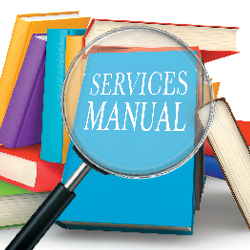|
REGISTRATION REQUIRED
exhibiting 101
 Nine Costly Blunders
Undoubtedly you'll make your fair share of trade show errors. However, here are a few all-too-common blunders you'll want to avoid. By Betsy Earle
At my very first trade show back in 2006 at McCormick Place, I had just been given the trade show manager position along with a stack of order forms, a floor plan, and a 50-by-70-foot raised-floor booth. I was armed with the show kit, which, back then, was printed on paper in a binder, and I felt like I was going to ace my first install. Then the show electrician told me that I had ordered enough electricity to power downtown Chicago. Oops.
There's a pretty substantial learning curve in the trade show industry when it comes to exhibit design, trade show marketing, and exhibitor services. Every day, there's some new rule or regulation or a new hiding place for orders within a show kit, and the rules are constantly changing. That said, there are a number of ways to prevent issues on site. I've compiled a list of mistakes that I've made (and a few I've watched others make) in the hopes that you can avoid making the same blunders. 1. Not completing the outbound shipping destination paperwork prior to arriving at the show – or at least by close of show. The online platforms for most of the general service contractors (GSCs) offer a place to input your exhibitry's outbound information before you even get on site. You'll need to know where your booth is shipping after your event, whether it's shipping to more than one destination, and what each of those endpoints are. Let's say you are going to have four outbound destinations at the close of show, but only know three of them. Don't wait until the show closes to obtain all of the information. Rather, submit what you know before you get to the show, and you'll be one step ahead of the game. If you wait until the close of show to submit the information, you'll likely find yourself twiddling your thumbs in a long line at the exhibitor service desk instead of accomplishing other tasks, such as supervising your dismantle. By completing the outbound paperwork in advance, you'll either have the material handling agreement (MHA) dropped off to your booth or be able to go pick it up at the service desk before the show closes. This will save you ample time and reduce the likelihood of rushing to get paperwork completed – potentially compounding the error – at the last minute. 2. Assuming that items requiring electricity need their own outlet (and the opposite – assuming that you can plug everything into one outlet). By failing to understand your specific needs, you can find yourself with too many or too few outlets, and both scenarios end up costing you extra money. Typically, outlets are purchased in 5, 10, 15, or 20 amperage increments. Some items, such as blenders, hair dryers, refrigerators, and heavy equipment, require a substantial (and often surprising) amount of amperage. While devices such as cell phones, laptops, and stem lights can use a shared outlet and power strip, larger items will require a dedicated outlet. Bear in mind that the average power strip only supports up to 15 amps of power, so even if you order 20 amps for that outlet, the power strip will limit your draw, which means a device might be underpowered. You might need another outlet. Don't order too much power for your booth, but don't shortchange yourself because if you need an additional outlet on site at the last minute, the cost (including the on-site labor) could be prohibitive. Once you know what you need to power, draw it on the floorplan, and reach out to the on-site electrical team with questions. 4. Incorrectly completing the outbound material handling agreement. While all blank fields on the MHA are important, I want to highlight a particularly sensitive field. First and foremost, the "from" is where the freight should be leaving from. This part is obvious. Exhibitors often err, however, when it comes to ensuring this field states both the exhibiting company name and the exhibit house name, as well as anyone's name who the bill of lading (BOL) might call out. The BOL, which catalogs the details of a shipment, including its destination, will need to match the same "from" field or the GSC will not release your freight to the carrier. It's better to have too much information than leave something out. Once I left an installation and dismantle (I&D) lead to fill out this paperwork for me. Rather than putting my client's name down, he put my company name, but the problem was that the BOL had my client's name on it. When the carrier showed up, the GSC would not release the freight because the paperwork did not match, and I was on a plane halfway home. No one could change this paperwork but me or the person who had signed off on it, causing a delay in the freight being removed from the building. Luckily, the exhibitry wasn't going directly to another show and didn't have to be returned by a certain date, or we would have been in big trouble. 5. Breaking the in-line booth rules. The International Association of Exhibitions & Events (IAEE) is a nonprofit organization that provides guidelines for show management and exhibitors alike. Among the constraints for exhibitors' in-line booths are height restrictions, lines of sight, etc. (Not every show follows these standard IAEE guidelines, and many shows set their own rules.) One of those guidelines states that in-line booths cannot have logos on fabric or panels facing an in-line neighbor, as this would detract from their message. I made this mistake and had my client's logo breaking the rule. Luckily, we were able to flip the panel so that their logo was covered with the side pipe and drape. Organizers can require you to take down non-complaint properties, and you have every right to report noncompliant neighbors to show management. It's only fair that everyone plays by the same rules. Familiarize yourself with the exhibiting rules for each show so you're not left making last-minute adjustments in order to be compliant. 6. Not providing all show services documents, including installation diagrams, BOLs, and show orders, to the I&D team before the show. The better you prepare your crew for the show install, the more smoothly your installation will go. Installation diagrams are especially important if you have complex booth properties or custom components that might not be intuitive. Be sure to attach not only order summaries, but also invoices and receipts from GSCs and other trade show suppliers. This will aid the crew, especially if you are not on site to troubleshoot or run to the service desk to ask for anything missing or that needs to be added in real time. At $100-plus an hour per carpenter, you want to eliminate as much guesswork as possible. 8. Skipping the pull and prep to save money. When I started in this industry, I did not understand the importance of the pull and prep. Early in my career, a client convinced me that they did not want to pay for this service, and I went ahead and granted them their wish. I understood their perspective of not wanting to pay the extra money to have everything built and repacked, but granting them their wish turned out to be a big mistake on my part. We ended up with a series of towers shipped to the show with no baseplate feet. Apparently, at the prior dismantle, someone had safely wrapped them to a skid – that we hadn't brought with us. We were forced to fly someone from the warehouse with a checked suitcase that had these baseplates in it because there was no other way to get the parts that we needed in time for show open. A pull and prep can cost thousands of dollars – as it's typically billed at hourly warehouse labor rates, which can be $75 or more per hour. While it sounds like a pretty big chunk of money that your exhibit house is asking for, this step can save you hundreds of dollars. Imagine if you had to shell out for last-minute airfare, overweight luggage fees, and on-site labor. Or imagine the hassle of having to arrange onsite delivery of important missing parts. 9. Not including the booth orientation on electrical, plumbing, or rigging diagrams. One of my clients once had another exhibitor ordering show services for her. She had a 20-by-50-foot booth with all sorts of electrical outlets, and the exhibit house had mislabeled the floorplan, which essentially meant that the outlets were all installed backward. By the time she got to the exhibit hall, the flooring had already been installed on top of the outlets, and her crew was ready to go – except for one problem: All of her electrical outlets were transposed on the floor. She had to have the electricians return to the booth, remove the carpet, retape all of the outlets, and put the carpet back down, setting her installation labor crew back several hours and costing her a bundle in the process. The trade show industry is always evolving, and exhibitors constantly need to learn new rules and figure out where to find what. Ultimately, the show must (and will) go on whether you're ready or not, no matter how much it costs you to fix any of the mistakes along the way. Inevitably even the most experienced trade show managers are going to make mistakes, but hopefully some of these tips will help you avoid learning one or two of those lessons on your own.E  Betsy Earle, CTSM
Betsy Earle, CTSMmanaging director and founder of Event Driven Solutions LLC. Earle obtained her MBA at the University of Miami and earned her Diamond-level CTSM designation in 2018. Exhibiting101@exhibitorgroup.com
|
|
|
||||||||||||||||||||||||||||
|
|
||||||||||||||||||||||||||||
|
TOPICS Measurement & Budgeting Planning & Execution Marketing & Promotion Events & Venues Personal & Career Exhibits & Experiences International Exhibiting Resources for Rookies Research & Resources |
MAGAZINE Subscribe Today! Renew Subscription Update Address Digital Downloads Newsletters Advertise |
FIND IT Exhibit Producers Products & Services All Companies Get Listed |
EXHIBITORLIVE Sessions Exhibit Hall Exhibit at the Show Registration |
ETRAK Sessions Certification F.A.Q. Registration |
EDUCATION WEEK Overview Sessions Hotel Registration |
CERTIFICATION The Program Steps to Certification Faculty and Staff Enroll in CTSM Submit Quiz Answers My CTSM |
AWARDS Exhibit Design Awards Portable/Modular Awards Corporate Event Awards Centers of Excellence |
NEWS Associations/Press Awards Company News International New Products People Shows & Events Venues & Destinations EXHIBITOR News |
||||||||||||||||||||
|
||||||||||||||||||||||||||||






